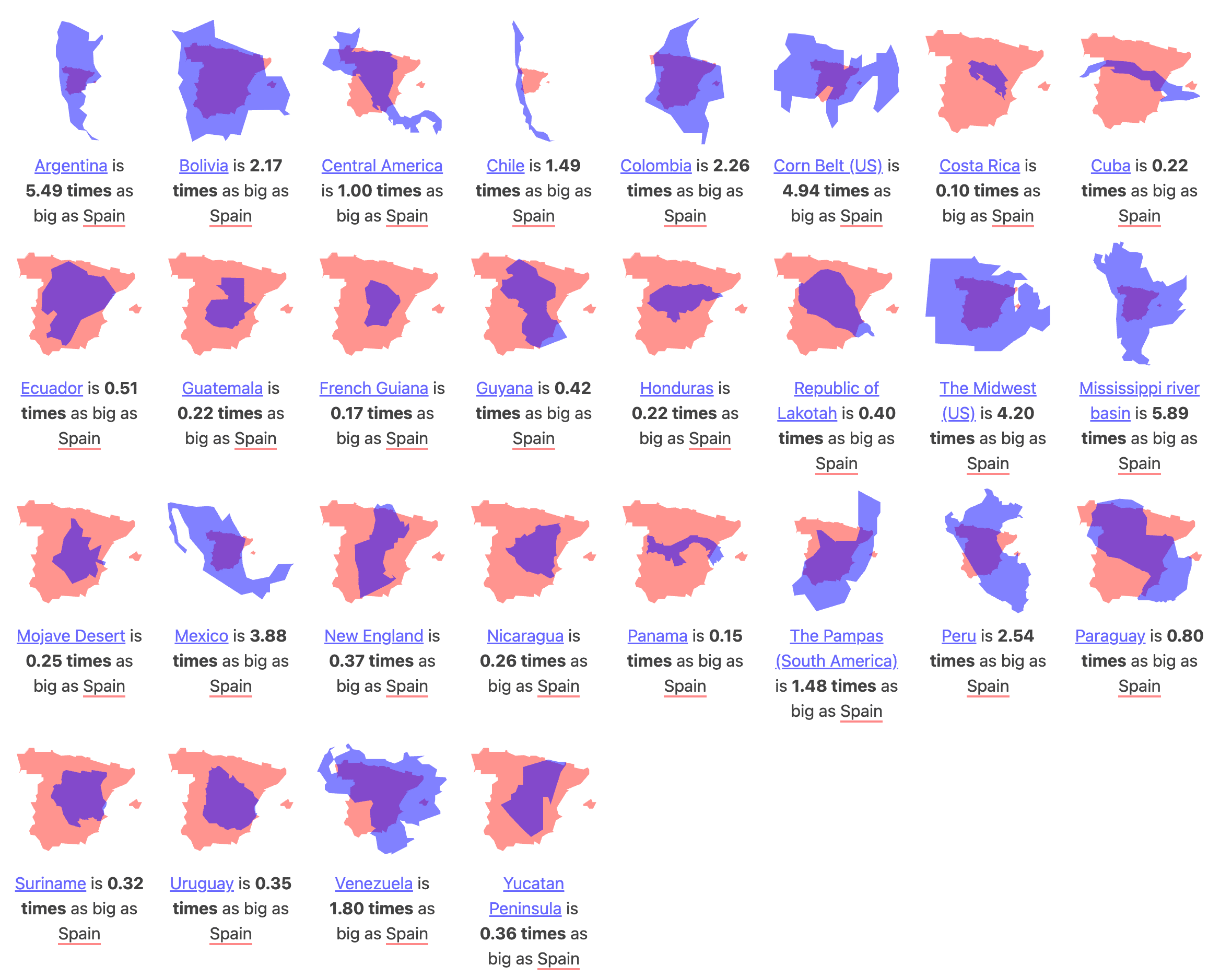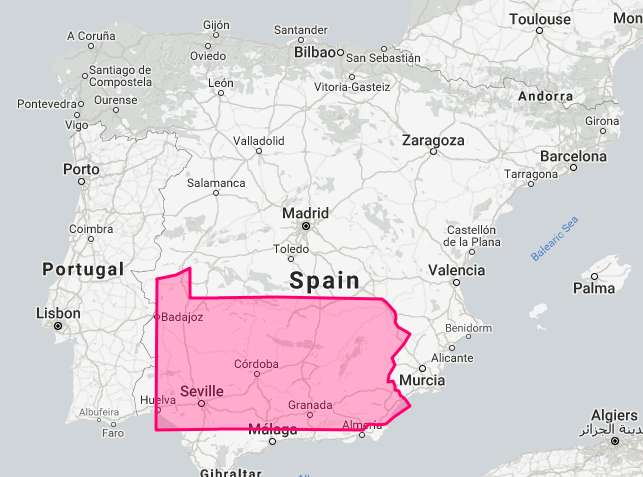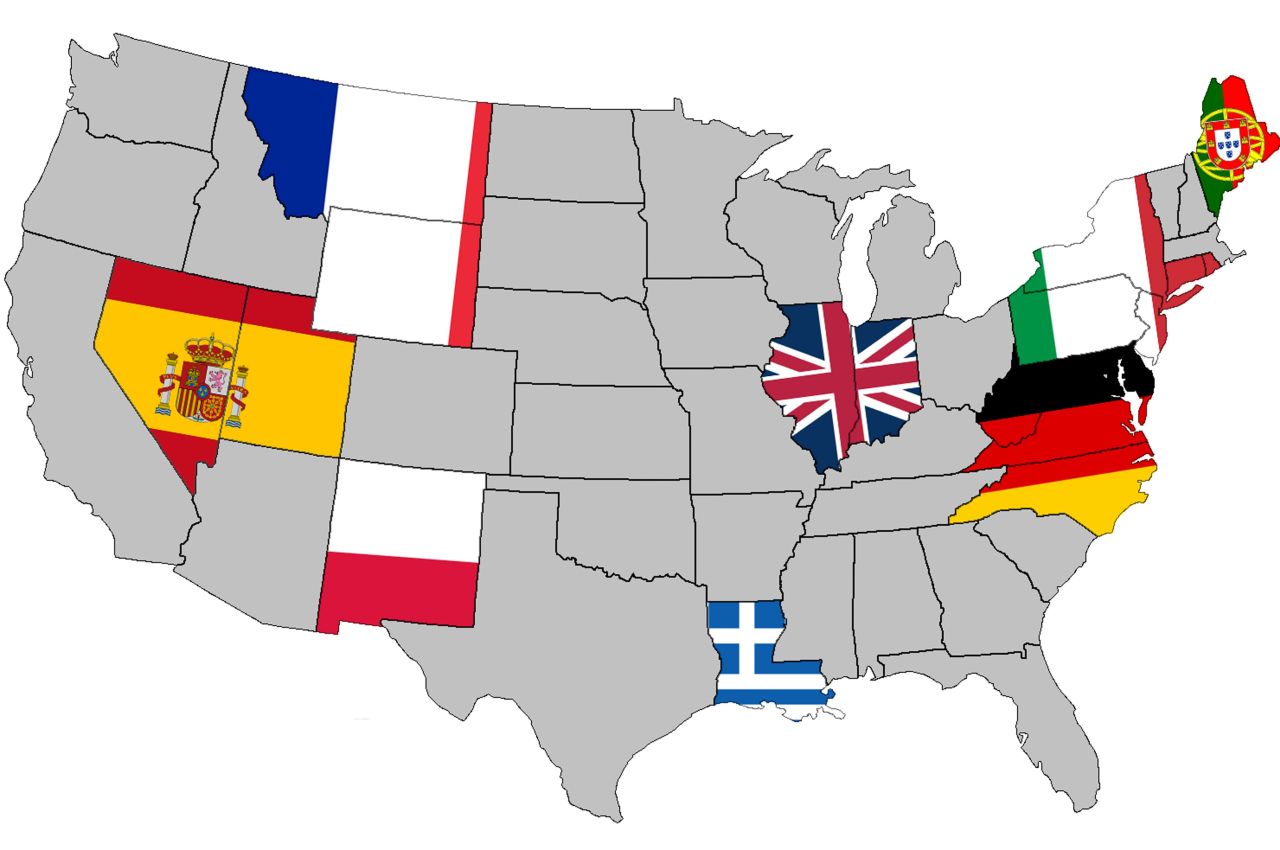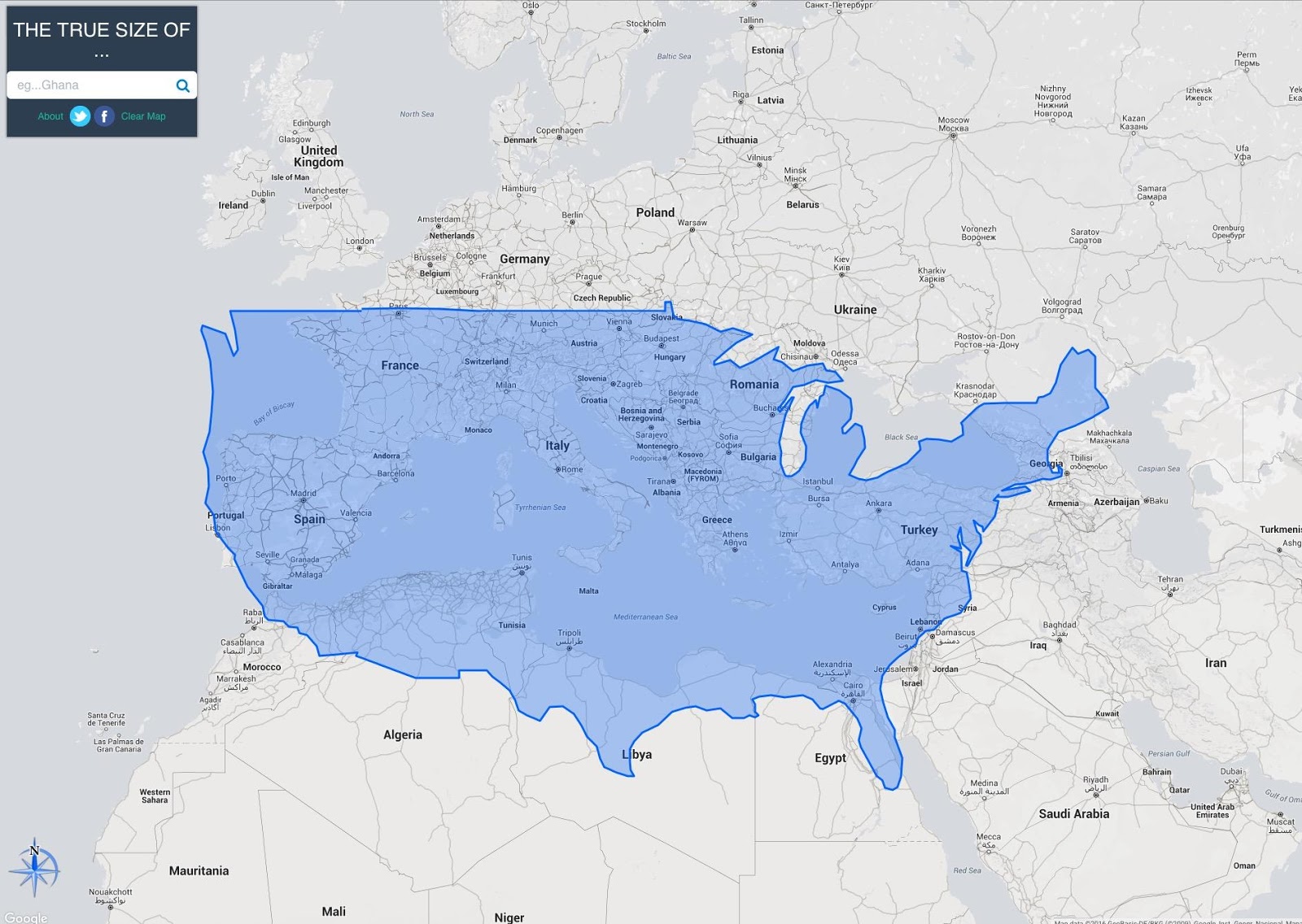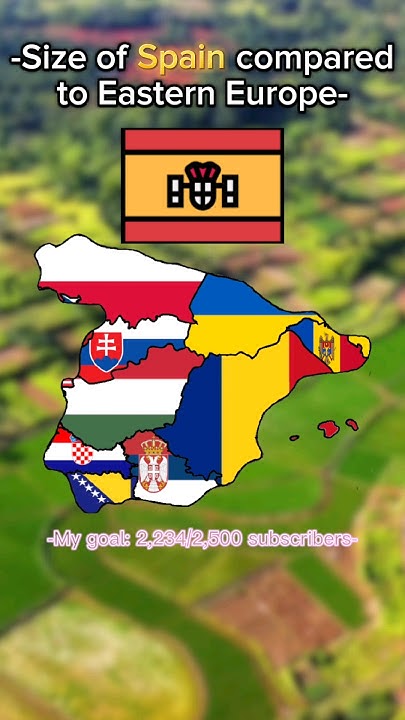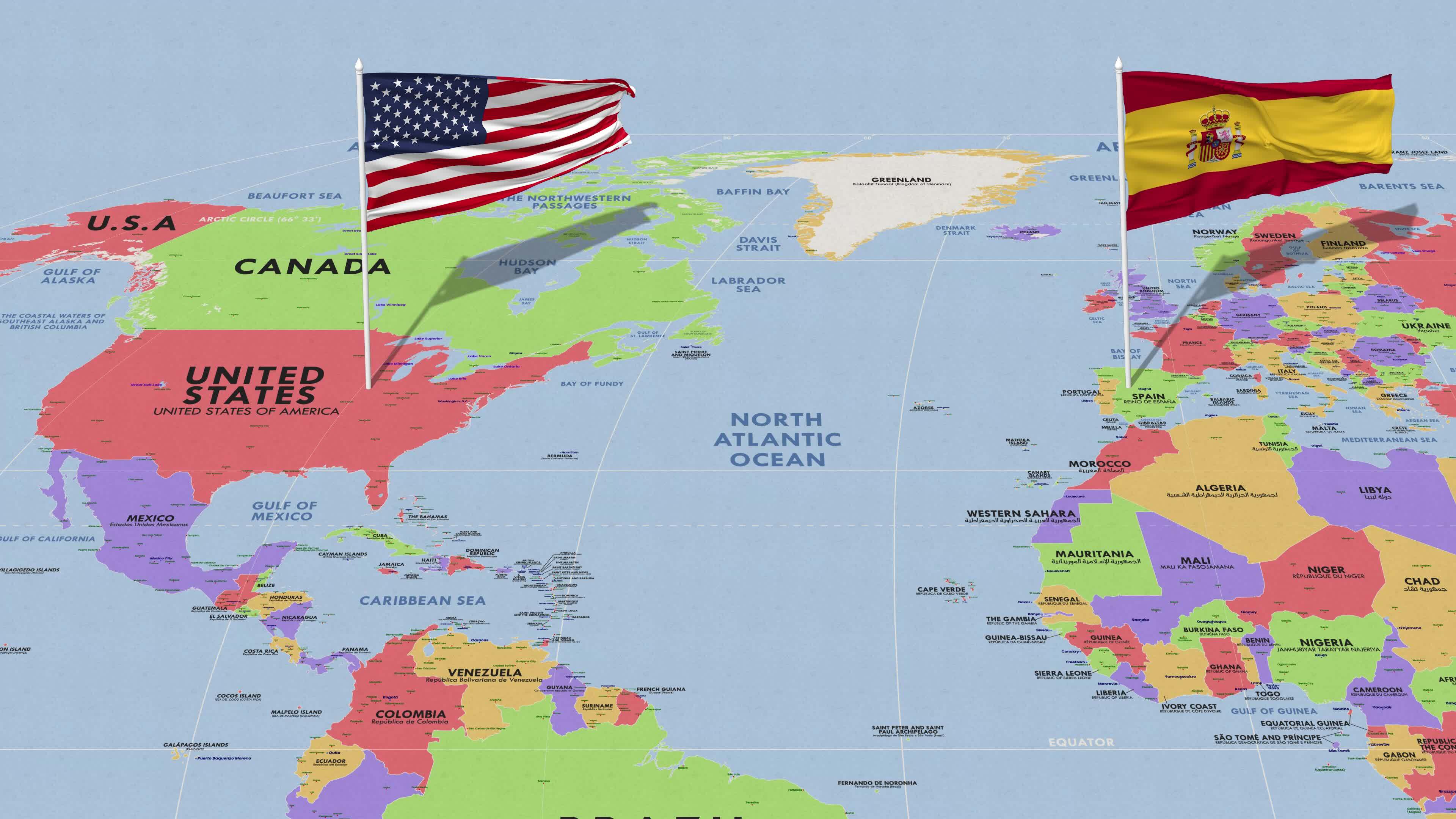Size Of Spain Compared To Us

Imagine standing on the sun-drenched beaches of Valencia, the Mediterranean breeze carrying the scent of paella and orange blossoms. Now, picture yourself driving for days across the vast plains of Texas, the landscape stretching endlessly under the Texan sun. Could these two experiences, seemingly worlds apart, somehow be linked by a common thread of comparison? Absolutely, and that thread is size.
While a transatlantic hop might make them seem disparate, comparing the geographic footprint of Spain to that of the United States reveals fascinating insights. This exploration isn't just about landmass; it's about understanding perspective, appreciating scale, and recognizing how geography shapes culture and experience.
Spain: A Nation Compact and Diverse
Spain, officially the Kingdom of Spain, occupies most of the Iberian Peninsula. Nestled in Southwestern Europe, it shares borders with Portugal to the west, France and Andorra to the north, and the Mediterranean Sea to the east and south.
Its location has historically made it a crossroads of cultures, a bridge between Europe and Africa.
According to data from the Instituto Nacional de Estadística (INE), Spain covers an area of approximately 505,990 square kilometers, or about 195,364 square miles.
This includes mainland Spain, the Balearic Islands (think Mallorca and Ibiza), and the Canary Islands off the coast of Africa. The country also includes two autonomous cities in North Africa, Ceuta and Melilla, adding to its geographic complexity.
Despite its relatively compact size compared to the United States, Spain boasts incredible geographical diversity. From the snow-capped peaks of the Pyrenees to the arid landscapes of Andalusia, the country offers a tapestry of climates and terrains.
This variation profoundly influences regional cultures, economies, and lifestyles.
A Historical Tapestry Woven Across the Land
Spain's history is deeply intertwined with its geography. The Roman Empire, the Moorish Caliphate, and the Age of Exploration all left their marks on the Spanish landscape, shaping its cities, architecture, and cultural identity.
Consider the ancient Roman aqueduct of Segovia, a testament to engineering prowess that still stands proudly today.
Or the Alhambra in Granada, a breathtaking palace that reflects the intricate artistry of Moorish rule.
Spain's role in the Age of Exploration, driven in part by its strategic location, profoundly impacted the world. Spanish explorers and conquistadors traversed the oceans, claiming vast territories in the Americas and leaving an indelible mark on global history.
The United States: A Continent Unto Itself
Across the Atlantic, the United States of America stretches across the North American continent. From the Atlantic to the Pacific, and encompassing a wide range of climates and ecosystems, the US presents a vastly different scale.
According to the United States Census Bureau, the total area of the US is approximately 9.8 million square kilometers, or about 3.8 million square miles.
This figure includes all 50 states, the District of Columbia, and various territories.
The sheer size of the United States is almost unfathomable. You could fit nearly 20 Spains within its borders.
The country encompasses deserts, mountains, forests, plains, and coastlines, each with its unique character and influence. The geographic diversity shapes regional identities, economies, and cultures.
A Nation Forged in Expansion
The history of the United States is intrinsically linked to its westward expansion. From the original thirteen colonies to the acquisition of vast territories through purchase, treaties, and conflict, the nation's growth was fueled by a desire for land and opportunity.
The Louisiana Purchase in 1803, for example, doubled the size of the United States, opening up vast tracts of land for settlement and resource exploitation.
The subsequent westward expansion dramatically shaped the nation's identity, leading to conflicts with indigenous populations and the development of distinct regional cultures.
Comparing the Scales: Context and Implications
The difference in size between Spain and the United States has significant implications for various aspects of life in each country. Transportation, infrastructure, governance, and even cultural identity are all influenced by the scale of the land.
In the United States, long-distance travel is commonplace. Air travel is often the most practical option for traversing vast distances.
In Spain, with its more compact size, high-speed rail networks have become a popular and efficient way to travel between major cities.
The size also affects governance. The United States, with its large and diverse population, operates under a federal system. Power is distributed between the federal government and the individual states.
Spain, while also a democracy, operates under a parliamentary system, with a more centralized government.
Culturally, the size differences contribute to distinct national identities. The United States boasts a wide range of regional cultures, each shaped by its unique history, geography, and demographics. Think of the Southern charm of Savannah, Georgia, compared to the bustling energy of New York City.
Spain, despite its smaller size, also exhibits regional diversity. The distinct cultures of Catalonia, Andalusia, and the Basque Country, among others, add to the richness of Spanish identity.
Beyond Size: Shared Values and Global Connections
While the size difference between Spain and the United States is undeniable and impactful, it's important to recognize the shared values and global connections that bind these two nations together. Both countries are democracies, committed to individual liberty, and deeply engaged in international affairs.
The relationship between Spain and the United States is rooted in history, culture, and economics.
Spain played a crucial role in the American Revolution, providing support to the colonists in their fight for independence.
Today, the two countries are allies, collaborating on issues ranging from counterterrorism to climate change. Economic ties are also strong, with significant trade and investment flows between the two nations.
"Geography is destiny," wrote the historian Jared Diamond.
While geography certainly shapes our world, it doesn't dictate it. The stories of Spain and the United States, though vastly different in scale, remind us that human ingenuity, cultural richness, and shared values can transcend geographic boundaries.
Comparing Spain and the United States by size isn't just an exercise in statistics; it's an invitation to appreciate the diversity of our world and the connections that unite us. Perhaps, next time you're planning a trip, consider the scale of your destination and how it might shape your experience. You might be surprised by what you discover.

